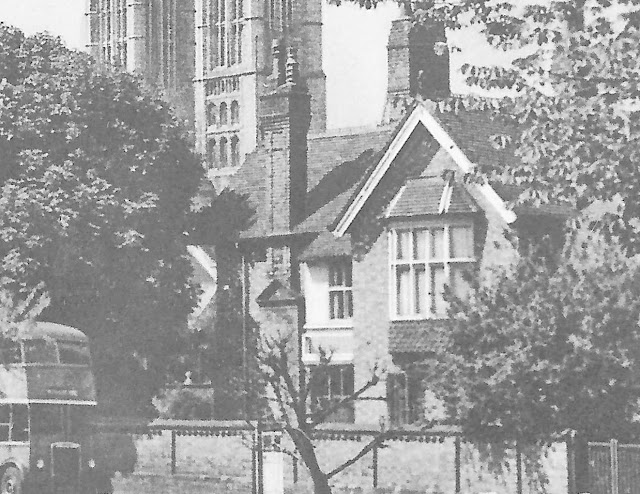Eastgate House was built about 1750 for Sir Cecil Wray, the man who had the Roman east gate demolished in 1763 because it was partly in his garden!
Arthur Trollope, stamp distributor, a member of the Lincolnshire Trollope family lived here from about 1840 for 30 years
Robert Gardiner Hill, of the Lincoln Lunatic Asylum, used part of the house for private mental health treatment.
 Lincolnshire Chronicle 30th December 1853
Lincolnshire Chronicle 30th December 1853Septimus Lowe, the Lincoln Coroner, bought the house in about 1880. Michael Drury designed alterations and additions to the house. Tenders ranged in price from £2,134 to £3,666, the lowest tender was accepted.
Alfred Shuttleworth, the son of Joseph Shuttleworth bought the house in August 1888 and made several additions and improvements to Eastgate House: William Watkins designed additions in 1888, possibly the west wing; Otter and Broughton erected an engine house in 1890; Mortimer and Sons designed a billiard room in 1896.
The Dolphin*, one of the oldest inns in Lincoln, stood at the corner of Eastgate and Priorygate. Alfred Shuttleworth purchased it in about 1892 and had it demolished as it spoilt his view of the Cathedral from his home, Eastgate House, now the Lincoln Hotel. Although the demolition of the Dolphins caused much distress among the people of Lincoln at the time, it is obvious that the northeast view of the Cathedral was considerably improved. It also left room for the erection of Tennyson's statue in 1905.
Alfred Shuttleworth paid for the restoration and half-timbering of the 17th century building on the opposite side of Priorygate. It became known as "Shuttleworth's Rest" and "The Rest". The interior of the ground floor was fitted out with fixed benches so that those who had walked up the hill from lower Lincoln could have a rest.
It now houses the property department of Lincoln Cathedral.
There was a robbery at the house on 17th December 1909, Shuttleworth offered a £100 reward for the conviction of the culprits and recovery of his 27 snuff boxes, valued at over £1,000.
 |
| Eastgate House from Northgate |
Alfred Shuttleworth's pictures and art treasures were sold at Christie's in London. The first day's sale on 3rd February 1926 included old French and English snuff boxes, bonbonnieres, scent, seals, etc. On the Thursday Chippendale, Sheraton and other English furniture, Persian carpets and rugs. On the 5th February modern pictures and watercolours by many well-known English artists of birds landscapes and Cathedral cities.
Eastgate House became home to Thomas Maynard-Page (1854-1941), a Lincoln solicitor. Part of the house was The Eastgate Court Cafe, operated by "the Misses Green", the cafe was still in business in 1959.
Part of the house became an officer's club during World War 2. The Page family lived in the west wing adjoining East Bight.
 |
| Alfred Shuttleworth's west wing, the only surviving part of Eastgate House. |
The main part of the house was demolished in the early 1960s and the reinforced concrete Eastgate Hotel was constructed. The wing that Alfred Shuttleworth built was retained and a new section was built to join the two halves together. Trust Houses bought the hotel when it was completed.



